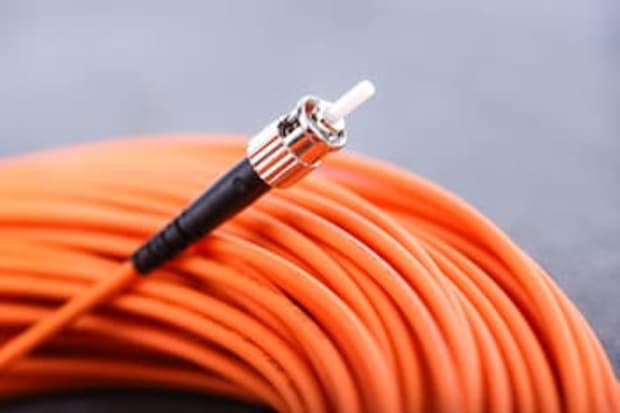- Published 28 Jun 2023
- Last Modified 29 Aug 2023
- 5 min
How to Test a Fibre Optic Cable
Explore the world of high-speed data transmission as we discuss fibre optic cables, from their intricate construction to their incredible capabilities, and learn how to test these cables for optimal performance.

In the fast-paced world of data transmission, fibre optic cables are a game-changer. Their ability to transfer vast amounts of information at high speeds makes them an indispensable asset for businesses across the globe. This guide aims to illuminate the science behind fibre optic cables, their composition, and how to test them to ensure optimal performance.
How Does Fibre Optic Cable Work?

Understanding fibre optic cables' function begins with comprehending light transmission principles. Unlike conventional copper cables that transmit information via electrical pulses, fibre optic cables use light pulses. This light, generated by lasers or LEDs, carries data from one point to another.
The cable comprises a bundle of glass strands, each thinner than a human hair. Light signals bounce off the walls of these strands, a phenomenon known as total internal reflection. This enables the light to travel vast distances with minimal loss. It's this principle that allows fibre optic cables to transmit large amounts of data quickly and accurately, making them the backbone of high-speed internet and telecommunication networks.
What are Fibre Optic Cables Made of?
Fibre optic cables consist of several layers, each serving a unique purpose. At the core, we find a strand of high-quality glass or plastic that acts as the pathway for light transmission. This core is surrounded by a layer known as cladding, which has a lower refractive index. The interplay between the core and the cladding enables the total internal reflection necessary for light transmission.
Surrounding these inner components is the buffer coating, a protective layer designed to cushion the fibre from damage and moisture. Finally, these elements are housed in a cable jacket for additional protection and easy identification.
What is the Transmission Speed of Fibre Optic Cable?

The speed at which data can be transmitted over a fibre optic cable is truly staggering. In practical applications, single-mode fibre optic cables can provide speeds up to 100 Gbps, while multimode cables typically offer between 10 and 40 Gbps.
However, these speeds can be influenced by a range of factors, including the quality of the cable, the light source, and the distance over which the data needs to travel.
Testing Fibre Optic Cables
Now that we've covered the basics of how fibre optic cables work, their construction, and their impressive speeds, it's time to learn how to test these cables to ensure optimal performance. Regular testing is essential to maintaining high-speed, reliable data transmission.
The process for testing fibre optic cables is as follows:
- Visual Inspection: Before advanced testing, conduct a visual inspection. Look for any visible damage to the outer jacket, like cuts or degradation, which could impact the integrity of the inner fibres. Use a fibre optic tracer or visual fault locator to identify any clear breaks or sharp bends in the cable
- Continuity Testing: This test ensures that light can pass from one end of the cable to the other, indicating there are no severe blockages or breaks in the fibre. A light source is introduced at one end, and a power meter at the other verifies its receipt
- Optical Loss Testing: This test measures the total loss of light power over the length of the cable, resulting from factors such as cable length, connectors, splices, or bends. It's conducted using a light source and power meter, like continuity testing. The light loss is then compared against the acceptable loss for the given cable length and type
- OTDR Testing: Optical Time-Domain Reflectometer (OTDR) testing provides a more comprehensive view of cable performance. The OTDR sends a high-powered light pulse down the fibre and measures the light scattered or reflected. By analysing the amount of backscatter at various points along the fibre, it provides a snapshot of the cable's performance. This highlights any areas of faults or high loss. This test is particularly useful for long cable runs and is a standard test in the telecommunications industry
- End-Face Inspection: This test involves inspecting the end face of cable connectors using a microscope. It checks for dirt, dust, or scratches, all of which can significantly affect cable performance. The end face should be clean and free from defects
- Insertion Loss (IL) and Return Loss (RL) Testing: IL testing measures the loss of signal power resulting from inserting a device into the optical path, such as a connector, while RL testing assesses the light reflected to the source. Lower IL and higher RL values indicate a higher-quality cable assembly
- Network Testing: This final stage involves testing the cable in its operational environment. This real-world test ensures that network equipment can communicate effectively over the cable under normal operating conditions
After each test, if any faults or defects are found, necessary measures should be taken to rectify them. This could involve replacing a section of the cable, repairing connectors, or simply cleaning the end faces.
Summary
Maintaining a rigorous testing schedule for your fibre optic cables can be time-consuming but, ultimately, it is essential for reliable, high-speed data transmission. With a clear understanding of how to test fibre optic cable and how it works, you can ensure your business remains connected and operating at peak efficiency.
Given the critical role of fibre optic cables in powering your digital communications, it is imperative to meticulously manage their performance and integrity, recognising that the light they transmit forms the backbone of your business' connectivity infrastructure.